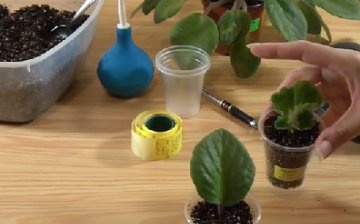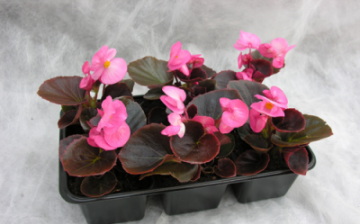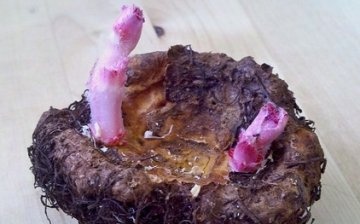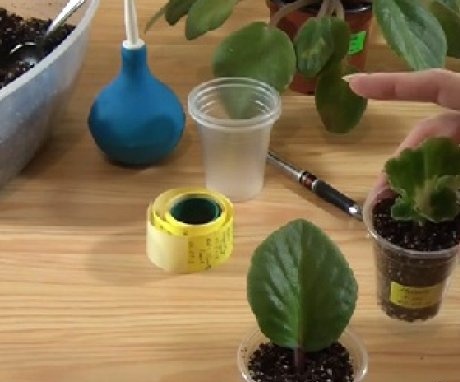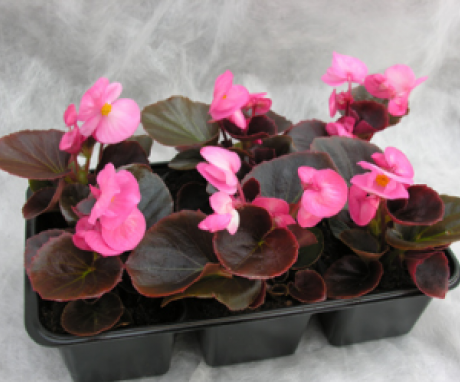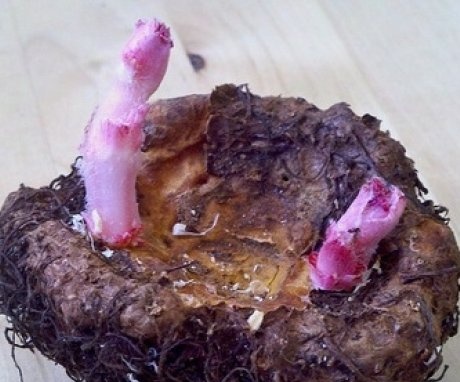Begonia leaf propagation: advantages and technology
Begonia can be propagated in several ways, but not all of them are suitable for beginner growers. Seed propagation is most often used only for breeding purposes, since it requires a long wait, but with its help you can get unusual plants with an unusual set of traits. Begonia can also propagate by cuttings, fragments of rhizomes, but the simplest and most convenient option is to propagate begonia by a leaf.
Content:
- Begonia leaf propagation technology
- The advantages of this method
- Other options for vegetative propagation of begonia
Begonia leaf propagation technology
This method assumes the use as planting material fragments of a leaf plate with veins, young plants with this method can be grown in 1-2 months.
For reproduction, one large leaf is selected, it must be completely healthy, free from any damage and fungal infections.
The sequence of planting begonias to obtain new shoots:
- The leaf plate is divided into several sectors, while it is important that each of them contains a fragment of the main vein along which nutrients move.
- It is recommended to cut the sheet with a scalpel or other very sharp instrument so that the edges of the slices are neat.
- Each individual piece is placed in a small container with a substrate.
- The best option for transplanting is a mixture of sand and peat in equal proportions, sometimes only sand is used.
- Leaf cuttings can be planted vertically with the vein touching the substrate, but sometimes they are simply laid out on the surface.
- Each container with a leaf cut must be placed in a mini greenhouse.
- To do this, you can use a plastic container with a lid in which the cups with the substrate are placed, or you can simply cover each container with a cut plastic bottle.
- After about 15-20 days, the begonia will sprout.
- Until new leaves appear, the greenhouse must not be removed; the substrate must be constantly kept slightly moist.
- However, it should not be too wet, otherwise part of the leaf may rot.
When the leaf fragments give roots, they must be removed from the greenhouse and transferred to a windowsill in a place with good lighting.
It is not recommended to remove the greenhouse immediately: the first airing should not last more than half an hour, gradually the plants need to be taught to be outdoors. Very soon landings will gain strength, and they can be moved into large pots or planted outdoors in a flower bed. Begonia is a fairly hardy flower, it will easily tolerate a transplant.
The advantages of this method
Reproduction by one leaf will allow you to get several shoots at once, which will begin to germinate in favorable conditions from the veins. The larger the leaf, the easier it will be to get new shoots from it, and the more there will be: for example, more than ten shoots can be obtained from one large leaf plate with large veins.
You do not need to cut off a whole stalk from the parent bush, you do not need to share the rhizome with a risk to the entire plant.
Parts of the sheet are very easy to provide with everything necessary for the rapid emergence of new shoots... This type of reproduction is most often used when you need to get a large number of young plants in the shortest possible time: the children will grow quickly, and after they take root, they can look for a place in the flower bed.
This method does not require special knowledge, even a novice gardener can handle it very easily. All that is needed is the necessary containers with soil and a sharp tool with which you can cut the sheet.
It is important to know that not all types of begonias can be propagated by a leaf: it is used for indoor plants with a creeping stem, and for those species that have a pubescent lower part of the leaves.
The petiole can be germinated by placing it not in the ground, but in water. The roots in this case will appear faster, but they will be weaker. Some growers believe that plants rooted in water cannot be transplanted into soil at all, especially into open ground in a flower bed.
Other options for vegetative propagation of begonia
There are other ways in which you can get young plants. Begonia reproduces well vegetatively, so seeds for germination are very rarely used.
The most common ways are:
- Propagation by cuttings. The method is very similar to leaf propagation: a stalk is cut, on which there should be at least two nodes with buds. Usually the length of the cutting is 6-8 cm. Immediately after cutting, it is placed in a moistened substrate consisting of peat and sand, and then covered with a greenhouse.
- Sprouting tubers... Since begonia is a tuberous plant, it has a pronounced dormant period, after which the tubers give new shoots. For germination, they are laid in January, very soon several sprouts will appear. When they reach 6 cm in height, they can be cut and placed in a rooting medium.
- Tuber division... In this case, the tuber is initially divided into several parts, the length is from 5 cm. A bud must be present on each tuber so that the plant can sprout. The place of the cut on the tuber is sprinkled with ash, after which it is placed in a container with a substrate. Even a small part of the rhizome sprouts quickly in moist soil, when the sprout reaches 10 cm, you can transplant it into a large pot or flower bed.
It is very easy to get young shoots of begonias on your own.
Any method of vegetative propagation will allow you to quickly get a beautiful and healthy plant that will decorate both your home and your garden.
More information can be found in the video.




